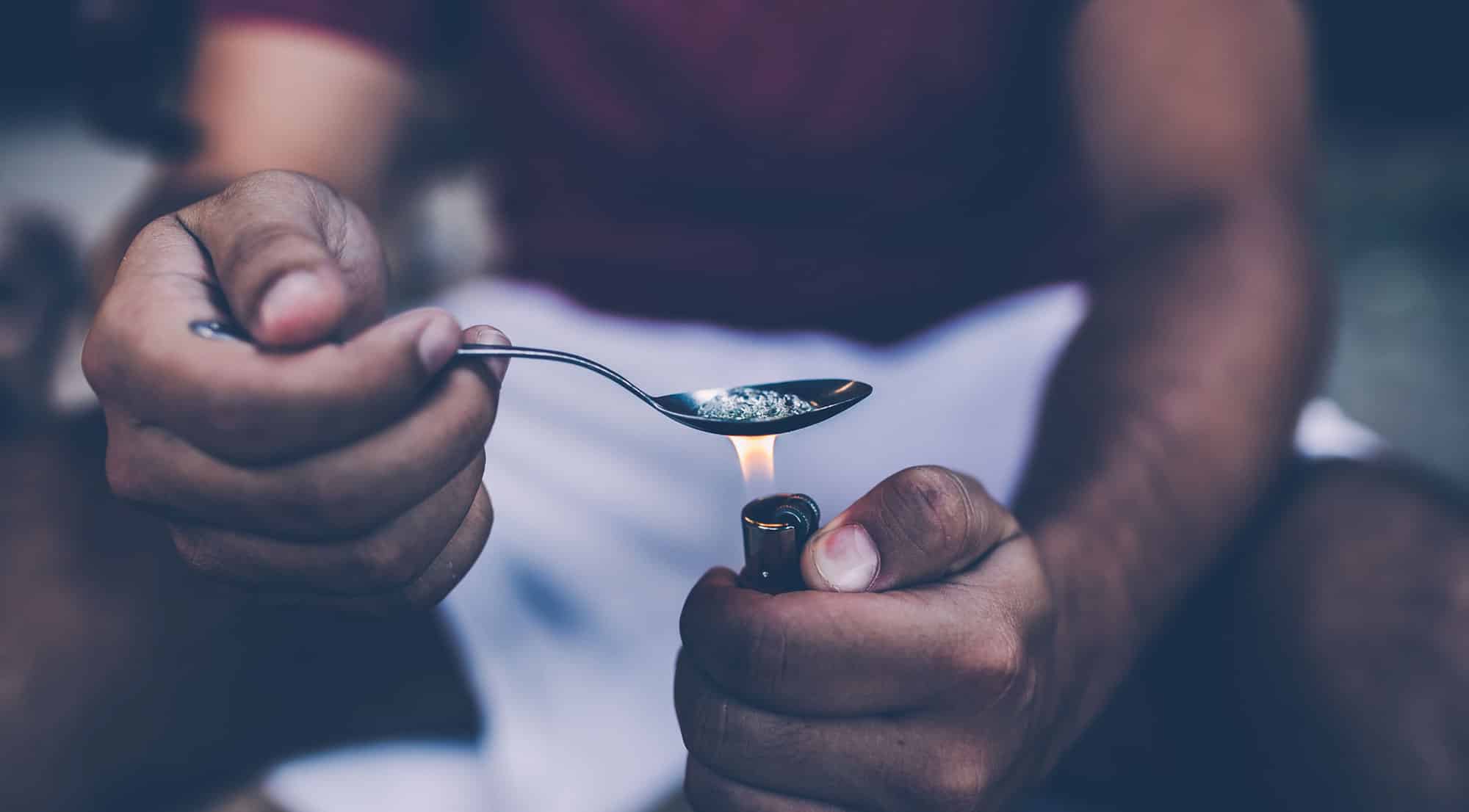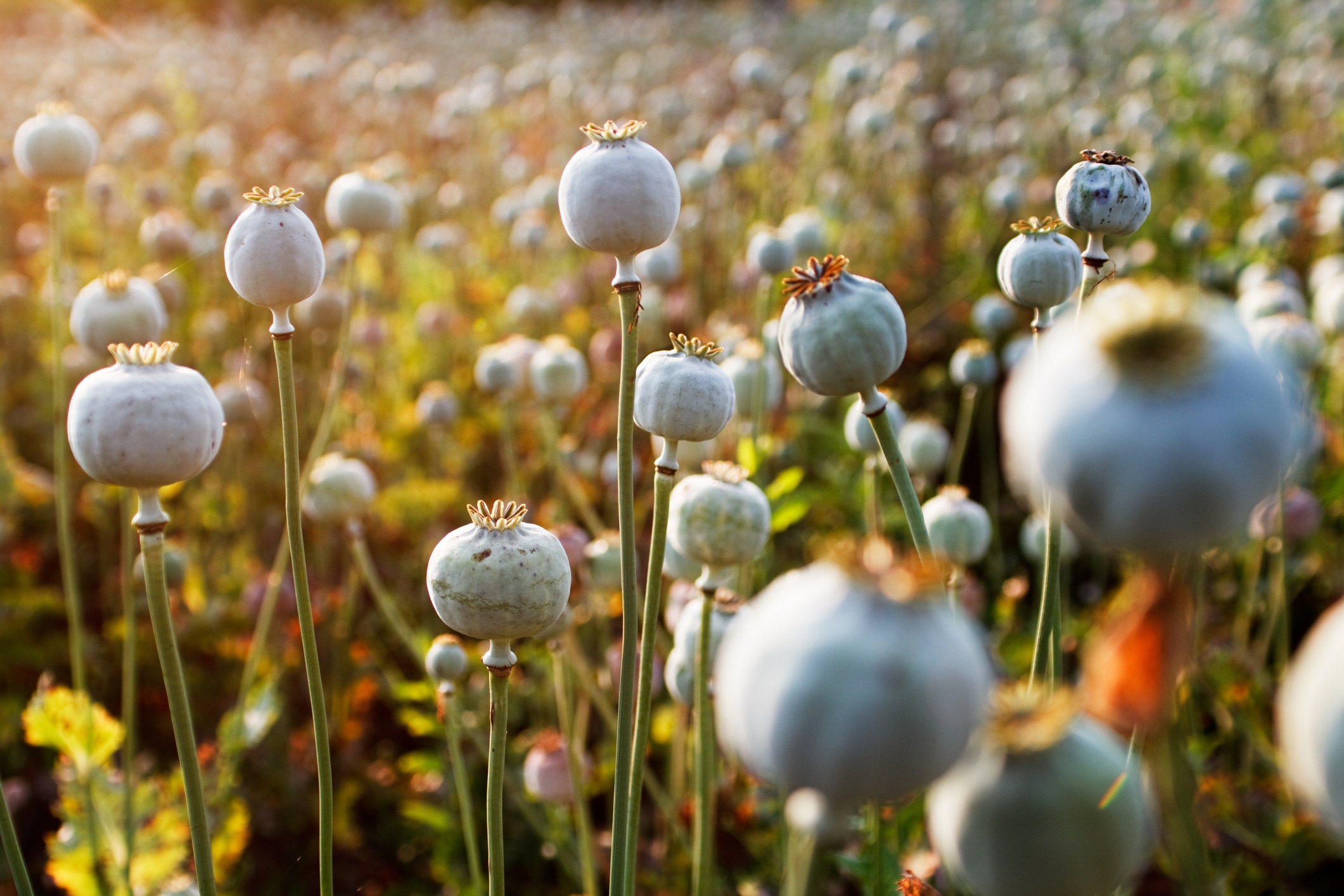
Heroin
Heroin is an illegal, powerfully addictive opioid drug with no medical application.
The Center for Substance Abuse Research
Heroin withdrawal symptoms are severe and get strongest between 48-72 hours after the last use.

Heroin is derived from a natural opiate, morphine, and was originally developed to be a cure for morphine addiction. As a schedule I drug with no medical application, heroin is a street drug that may often be combined with other drugs, diluted with flour or cornstarch, or contaminated with other dangerous chemicals. Heroin’s severe withdrawal symptoms are part of what makes it highly addictive; users may continue to seek out the drug simply in order to avoid painful withdrawal.
Heroin abuse rose slightly in 2016 and 2017 in comparison to the 15 years prior. As of 2017, the National Survey on Drug Use and Health 2017 Summary found that nearly half a million people in the US are current heroin users. A fraction of that group is adolescents, with the majority of users (approximately 390,000) being 26 and older.
Heroin remains relatively cheap to produce, but pure forms are rare and deadly; impure forms, however, can be just as lethal. Heroin is originally a white powder, but contaminants change its color. Black tar heroin is a variation that has been tainted with chemicals that have turned it dark brown or black and sticky. It is a dangerous and potent substance, and it may often be mixed or laced with other drugs, such as cocaine or fentanyl, with or without a user’s knowledge — increasing the potential for a fatal overdose.


Fast Facts about Heroin
Though its mother drug, opium, has been around for millennia, heroin entered American society in the late 1800s, developed from morphine by the Bayer drug company. It was touted as a replacement for morphine and was added to household drugs; within 40 years, it was recognized as an even greater addiction threat than its predecessor. The 1914 Harrison Narcotics Act banned heroin alongside cocaine, which had also been marketed as a cure-all.
- Heroin may be snorted, smoked, or injected. Injection provides the quickest onset of the drug’s effects, but it comes with a heightened risk of infection and disease, given that needles may be shared among users. HIV and Hepatitis A, B, and C have been commonly spread through the use of dirty needles.
- According to 2018’s Monitoring the Future Survey, teens perceive heroin as high risk and gravitate toward prescription opioids. However, misuse of prescription opioids such as Vicodin and OxyContin can be a gateway to heroin use.
- Heroin provides a surge of euphoria as it binds to opioid receptors in the brain. It depresses breathing and heart rate, causing sleepiness and a pain-relieving sensation. Heroin also causes effects like dry mouth, confusion, and heavy feelings in the limbs.
- In the case of an overdose, respiration and heart rate slow to dangerous levels and can lead to a coma. Because of heroin’s potency, it may take more than one dose of naloxone to reverse the effects of an overdose.
- Street names for heroin include Dope, Smack, Skag, Charley, Mud, and Brown Sugar.
In addition to the dangers of overdose and infection, heroin addiction has devastating effects on the body, including collapsed veins, weakened heart valves, and lung complications.
Treating Heroin Addiction
According to the Center for Substance Abuse Research (CESAR), heroin withdrawal symptoms are severe and get strongest between 48-72 hours after the last use. These symptoms include muscle and bone pain, restlessness, nausea, diarrhea, and cold flashes. These effects can be dangerous if mismanaged, which is why it’s important to have medical supervision or assistance during detox. Detox is only one part of recovery from heroin addiction. Treatment should address the needs of the whole person — emotionally, physically, and mentally — for long-term healing and recovery.
At The Meadows Malibu, we focus on treating both addiction and the underlying mental health conditions that often perpetuate self-medication through drugs. Our research-backed, dual diagnosis practices provide individuals with the tools and resources they need to live meaningful, healthy lives free of drugs like heroin. Our tailored plans include individual and group therapy, practices such as yoga and meditation, and an emphasis on wellness and nutrition. The journey back to health and joy in life is possible and can start today.

Find out more from these trusted sources:

We’re Ready to Help
Is it time to take that next step? Our Admissions team is here to help 24 hours a day and will treat you with compassion, dignity, and respect. The Meadows’ Admissions Specialists are here to help you on your way to the healthier, more fulfilling life you imagine. If you are interested in The Meadows Malibu for yourself or a loved one, call or fill out a contact form today!